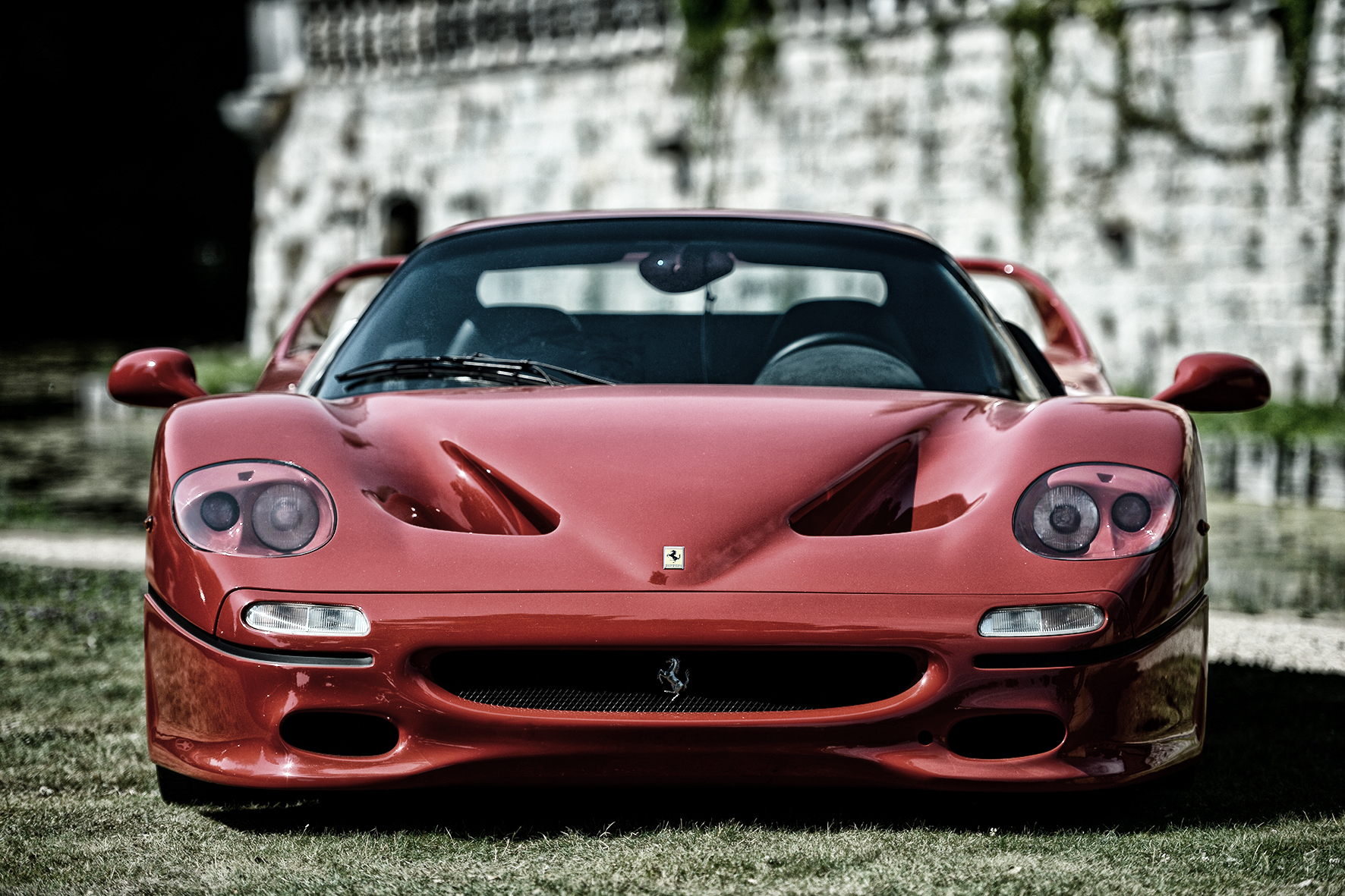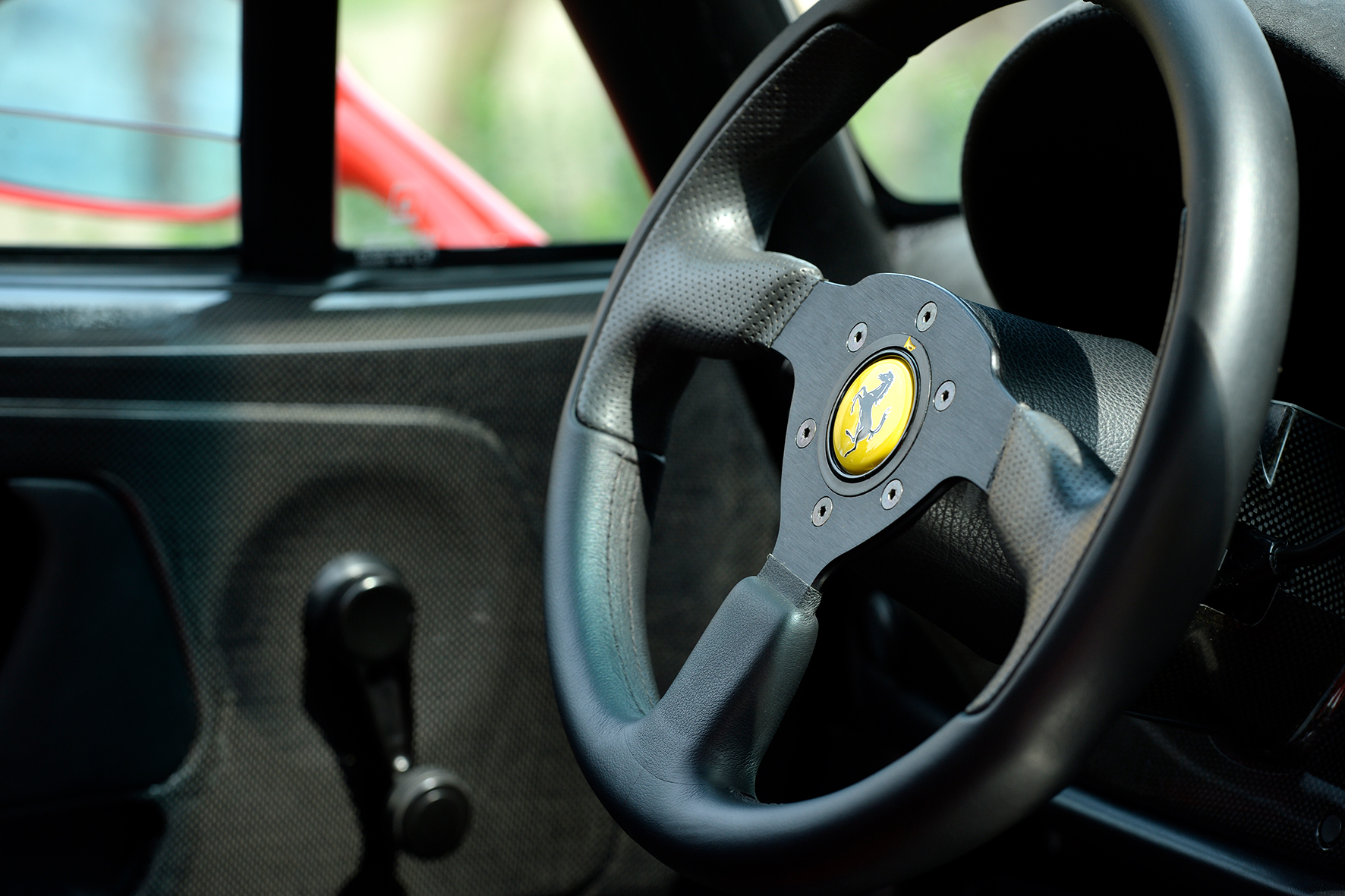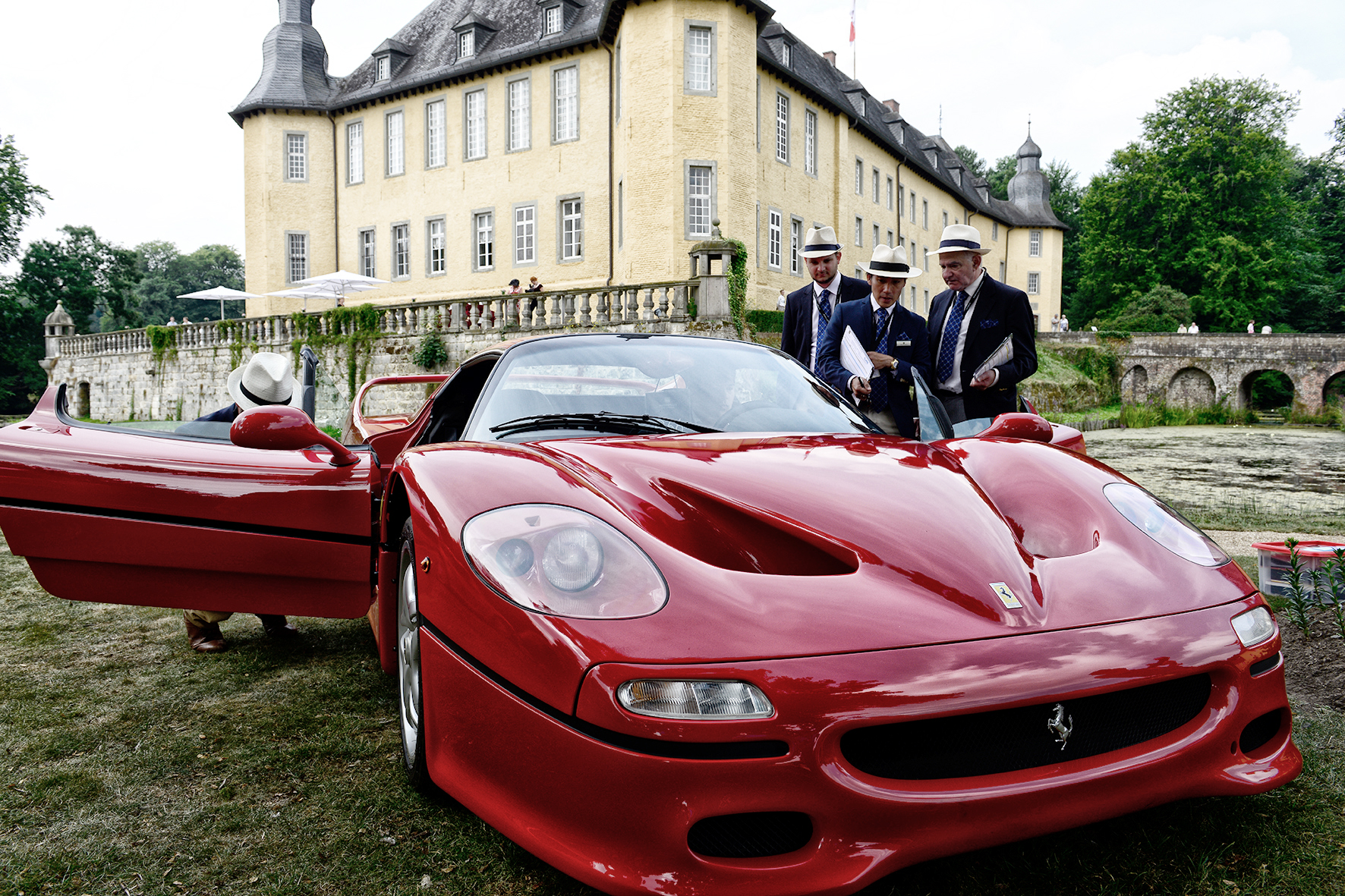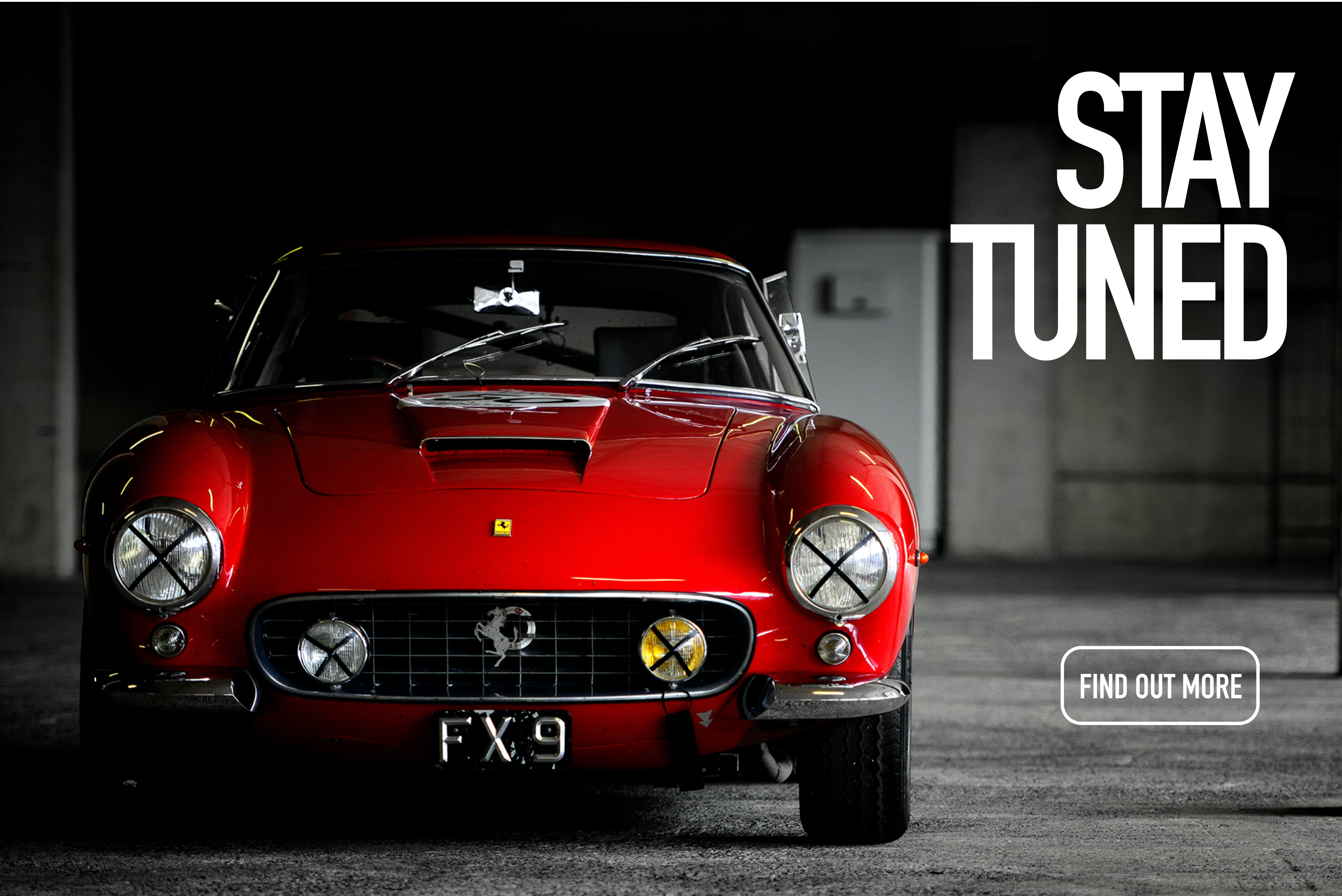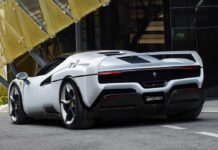The iconic Ferrari F40, the last road car which was finished under the reign of Enzo Ferrari, was the predecessor of the F50. This is a pretty heavy legacy for this new Ferrari Super-Sports-Car. When the F50 came out, I could not believe my eyes. To be honest, I was thinking that this is the most ugly Ferrari ever build. Today, more than twenty years later, the F50 is not my favorite Ferrari, but I like it now. The design is very unique but typical for the time when the car came out.
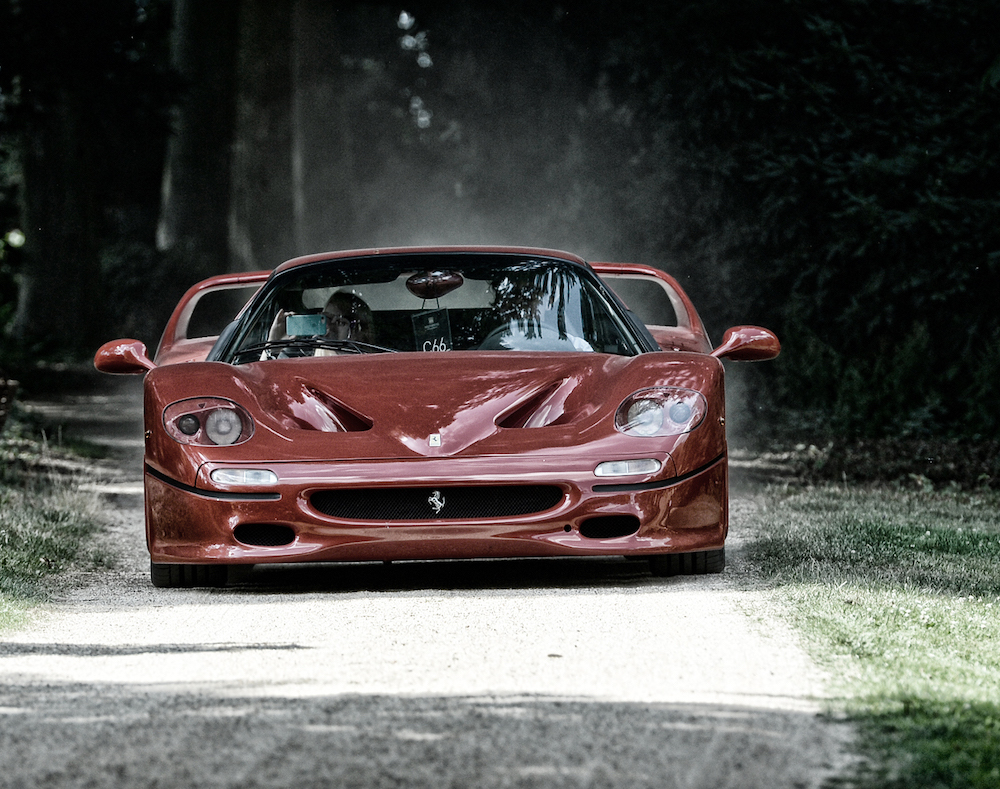
The Ferrari F50 was developed to celebrate the 50th anniversary of the Ferrari company, as the F40 ten years ago celebrated the 40th anniversary. With only 349 units produced the F50 is rarer than the F40 and even the Enzo. But nevertheless the Ferrari F50 did not achieved such a hype as the F40.
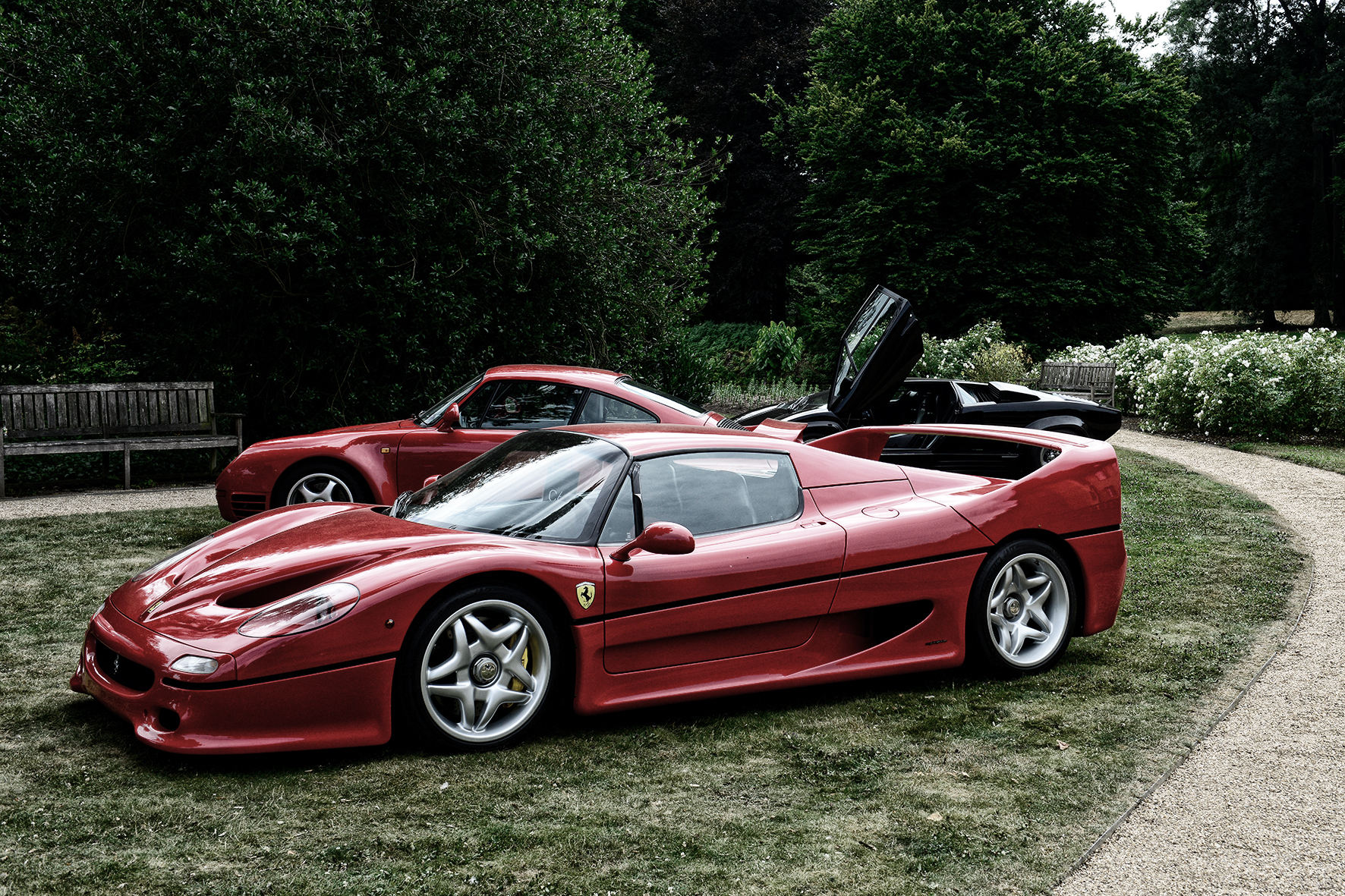
The Ferrari F50 was designed as a mid-engine sports car from 1995 to 1997. Introduced in 1995, the car is a two-door, two seat targa top. The car is powered by a 4.7 L naturally aspirated Tipo F130B 60-valve V12 engine that was developed from the 3.5 L V12 used in the 1990 Ferrari 641 Formula One car. The car’s design is an evolution of the 1989 Ferrari Mythos concept car.

Following the motorsport theme of the Ferrari F40 LM, Ferrari developed the F50 based F50 GT in collaboration with its racing partners Dallara and Michelotto to compete in GT1- class motor racing. Notable changes made to the car include a fixed roof, a large rear spoiler, new front spoiler, adjustable suspension system, Speedline racing alloy wheels with racing slicks and a large rear diffuser. The 4.7- litre V12 engine in the F50 GT was tuned to generate a power output of around 551 kW (749 PS; 739 hp) at 10,500 rpm.
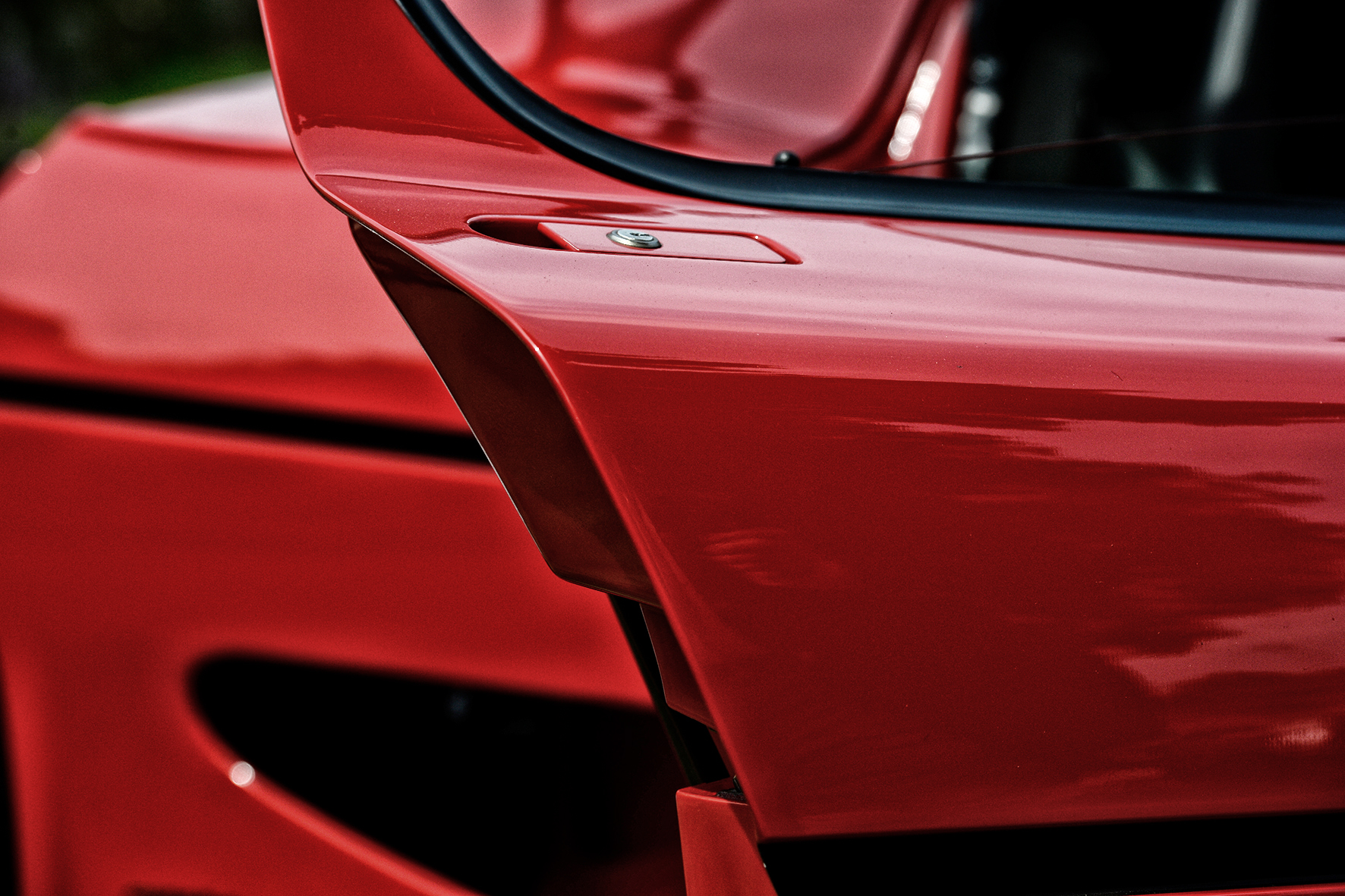
A test held in 1996 proved the car to be quicker even than the 333SP, but this went unnoticed as Ferrari cancelled the F50 GT project due to entry of purpose built racing cars in competition such as the Porsche 911 GT1 and due to lack of funding, instead focusing on Formula One after the BPR Global GT Series folded. Ferrari sold off the three complete chassis that were built – the test car 001, 002 and 003. Chassis 002 and 003 had bodies fitted before being sold. The remaining three tubs were reportedly destroyed.
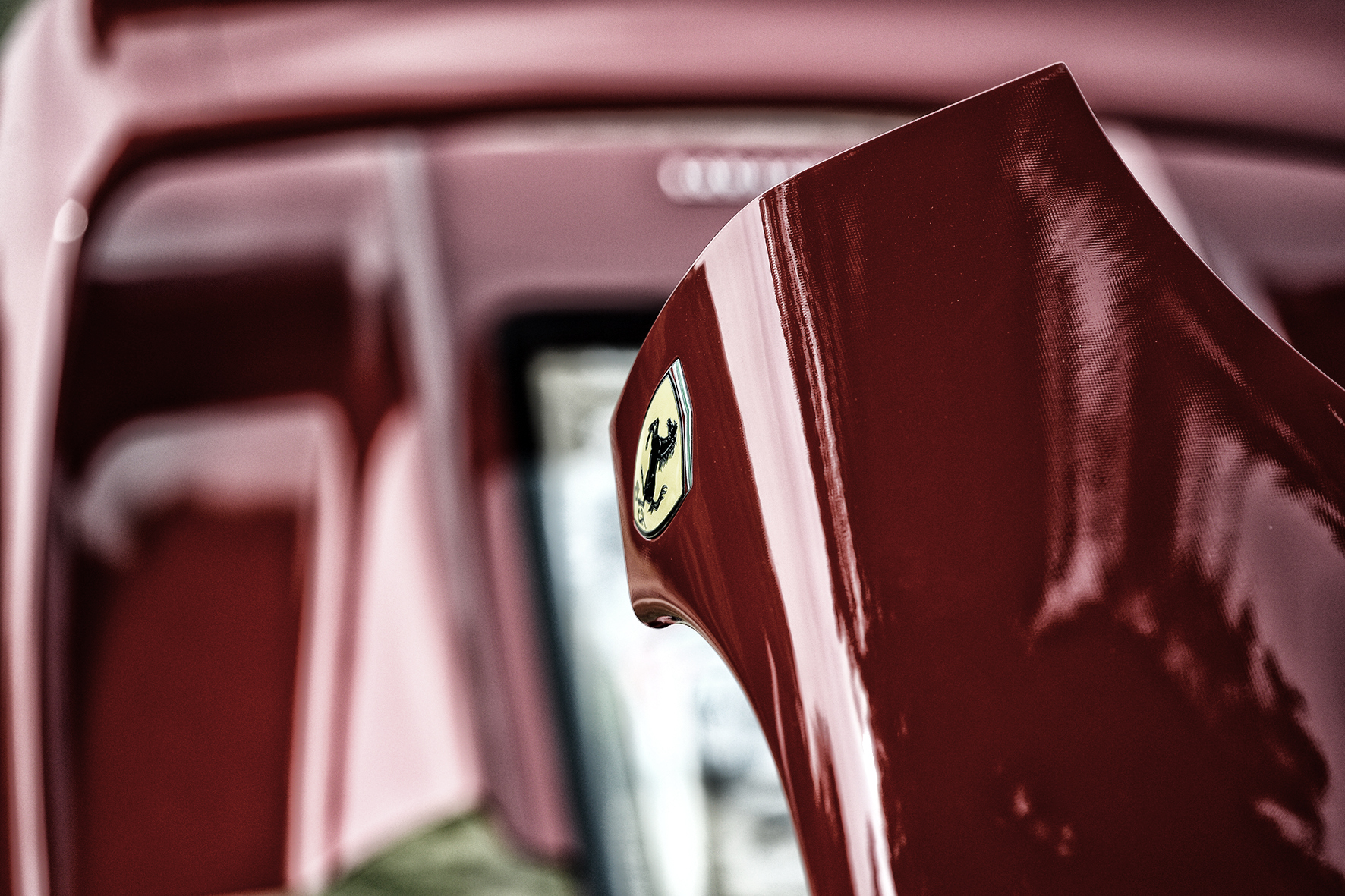
Whereas the previous two „Supercars“ of Ferrari, the 288 GTO and the F40, had been powered by supercharged V8 engines, the F50 used a normally aspired V12 engine. Similar the previous models had introduced increasing degrees from learning from Formula One cars, the F50 took this crossover to a new limit. The F50 was the most nearby a Formula One car, but for driving on public roads. It has a monocoque chassis the engine, derived form the Ferrari F1 car of 1990.
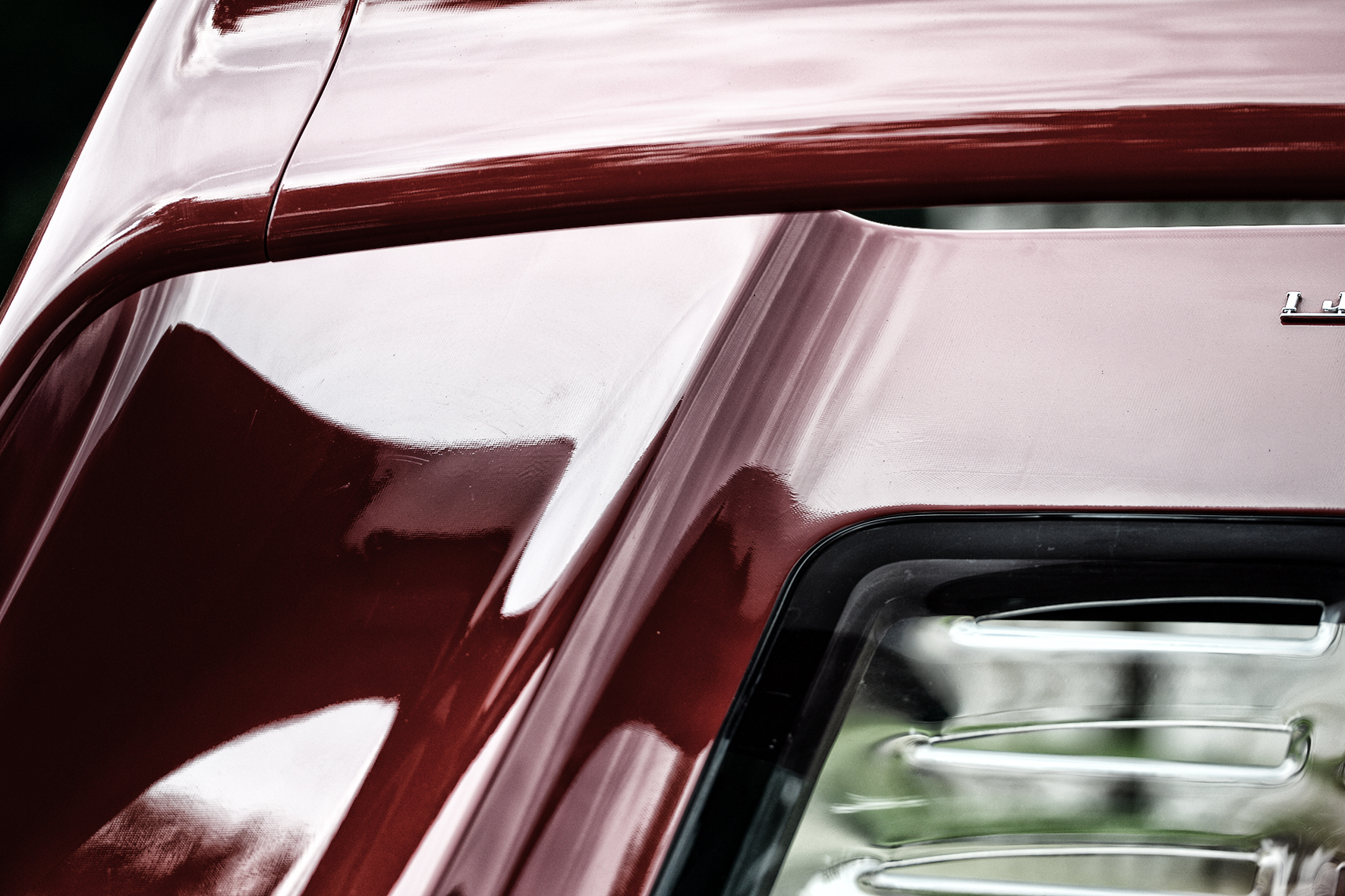
The Pininfarina design did not have the raw beauty of the F40, which is a bit sad. It was rounder but the aerodynamic was much better than at the F40. In my opinion the F50 is maybe the better „Supercar“ of the Ferrari history, but I think it isn’t the most beautiful and breathtaking Ferrari. So it is a bit of a shame, that the car even until today did not have the reputation which the Ferrari F50 deserves. But as I said before there are more easier things in life than to follow the Ferrari model that build up the „Super car era“ in the late 1980’s.
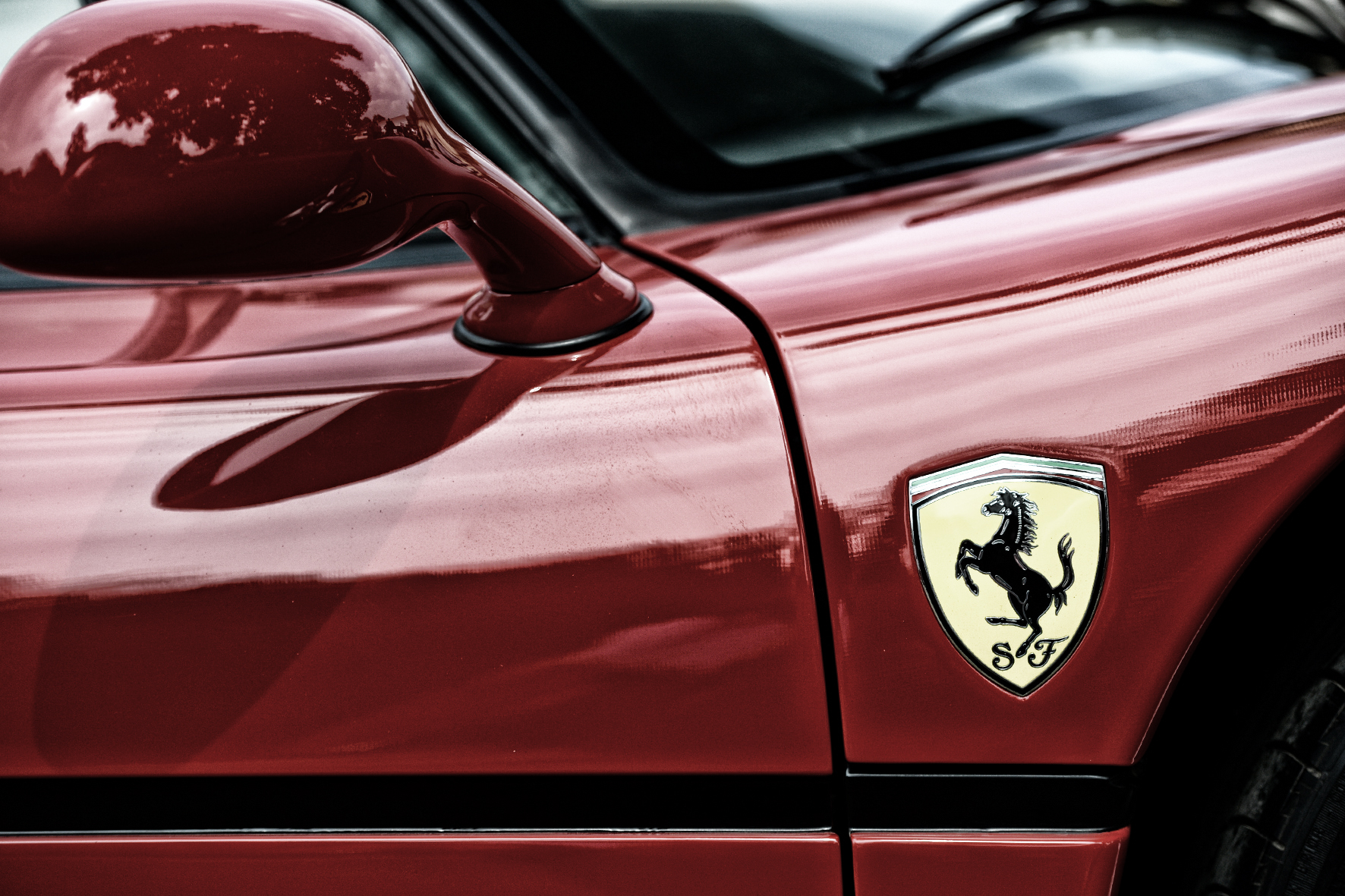
The Ferrari F50 is a milestone in technical aspects for the Ferrari history, not in the sense of pure beauty. But in my eyes it is the start to a new design philosophy with more softer, rounder body shapes, a bit of a „smooth criminal“ instead of the pure aggressive of it’s predecessor model in special the 288 GTO and the Ferrari F40. But I learnt to like the F50 over the years, a view under the engine cover of the Ferrari F50 is really a pleasure. Find out more about our photographer Ralph Lüker.
FERRARI F 50: TECHNICAL SPECIFICATION
MODEL F50
TYPE two-seater berlinetta and spider
YEAR OF PRODUCTION 1995 – 1997
TOTAL NUMBER BUILD 349 units / red 302 / yellow 31 / dark red 8 / silver 4 / black 4
ENGINE rear-mounted longitudinally 65 ˚ V12
BORE AND STROKE 85 mm x 69 mm
CUBIC CAPACITY CYL. / TOTAL 391.54 cc / 4698,50 cc
VALVE TRAIN DOHC, 5 Valve per cylinder
ASPIRATION naturally aspirated
COMPRESSION RATIO 11:1
TRANSMISSION 6-speed + reverse
HORSEPOWER 520 bhp at 8500 rpm
MAXIMUM TORQUE 470 Nm at 6500 rpm
FUEL FEED Bosch Motronic M 2.7 injection
LUBRICATION dry sump
CLUTCH multi plate
CHASSIS carbon-fibre monocoque
BRAKES Brembo discs all around
SUSPENSION FRONT/REAR independent push-rod, unequal-length wishbones, coil springs, gas-filled telescopic shock absorbers
LENGTH 4480 mm
WIDTH 1986 mm
HEIGHT 1120 mm
WHEELBASE 2580 mm
TRACK FRONT / REAR 1620 mm / 1602 mm
TYRES FRONT / REAR 245/35 ZR 18 / 335/30 ZR 18
WEIGHT WITHOUT FUEL 1230 kg (dry)
FUEL CAPACITY 105 liters
MAXIMUM SPEED 325 km/h
ACCELARATION 0 – 100 km/h 3,87 sec
0 – 1000 M 21,70 sec

